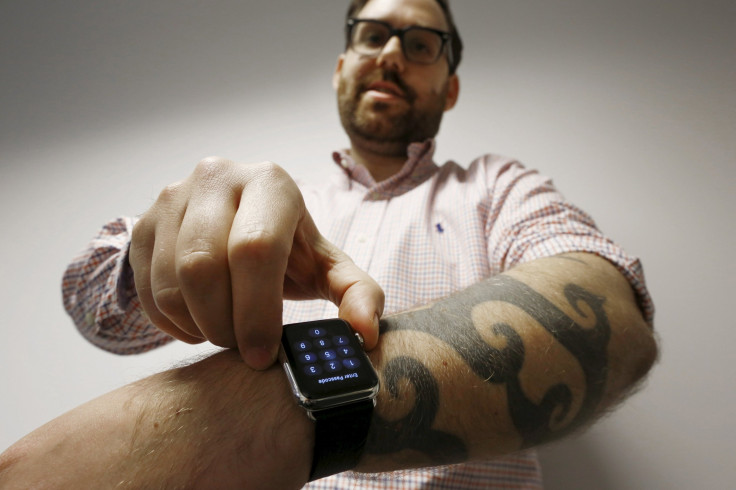Tattoogate Is Real: Apple Inc. Formally Admits Apple Watch Doesn't Play Nice With Tattooed Wrists

If you happen to have a tattooed wrist, the Apple Watch may not work in the way it was originally intended to. It’s a problem that Apple Inc. formally acknowledged Friday with an updated statement on its website.
“Permanent or temporary changes to your skin, such as some tattoos, can also impact heart rate sensor performance,” Apple said. “The ink, pattern, and saturation of some tattoos can block light from the sensor, making it difficult to get reliable readings.” Apple suggests users connect the Apple Watch to an external heart monitor via Bluetooth if their tattoos or other heart rate sensor issues prevent the Apple Watch from working properly.
The problem was first spotted by Reddit user Guinne55fan on Tuesday, who noticed that his Apple Watch would automatically lock and he wasn’t receiving notifications when he was wearing it on his tattooed arm. When he switched it to his arm without tattoos, the problem went away.
If tattooed customers aren’t interested in using an external heartrate monitor, they can also turn off the wrist detection feature of the Apple Watch. But doing so will disable the ability to use Apple Pay on the watch.
The problem lies in the way Apple Watch and many other fitness bands -- such as the Microsoft Band and Fitbit HR -- track heartrates. To get a reading, the fitness bands and smartwatches use sensors and green LEDs to shine light into a user’s wrist, then measuring it to output a reading. But when they are worn over skin with dark tattoos, they may fail to work entirely, according to the Guardian.
© Copyright IBTimes 2024. All rights reserved.












